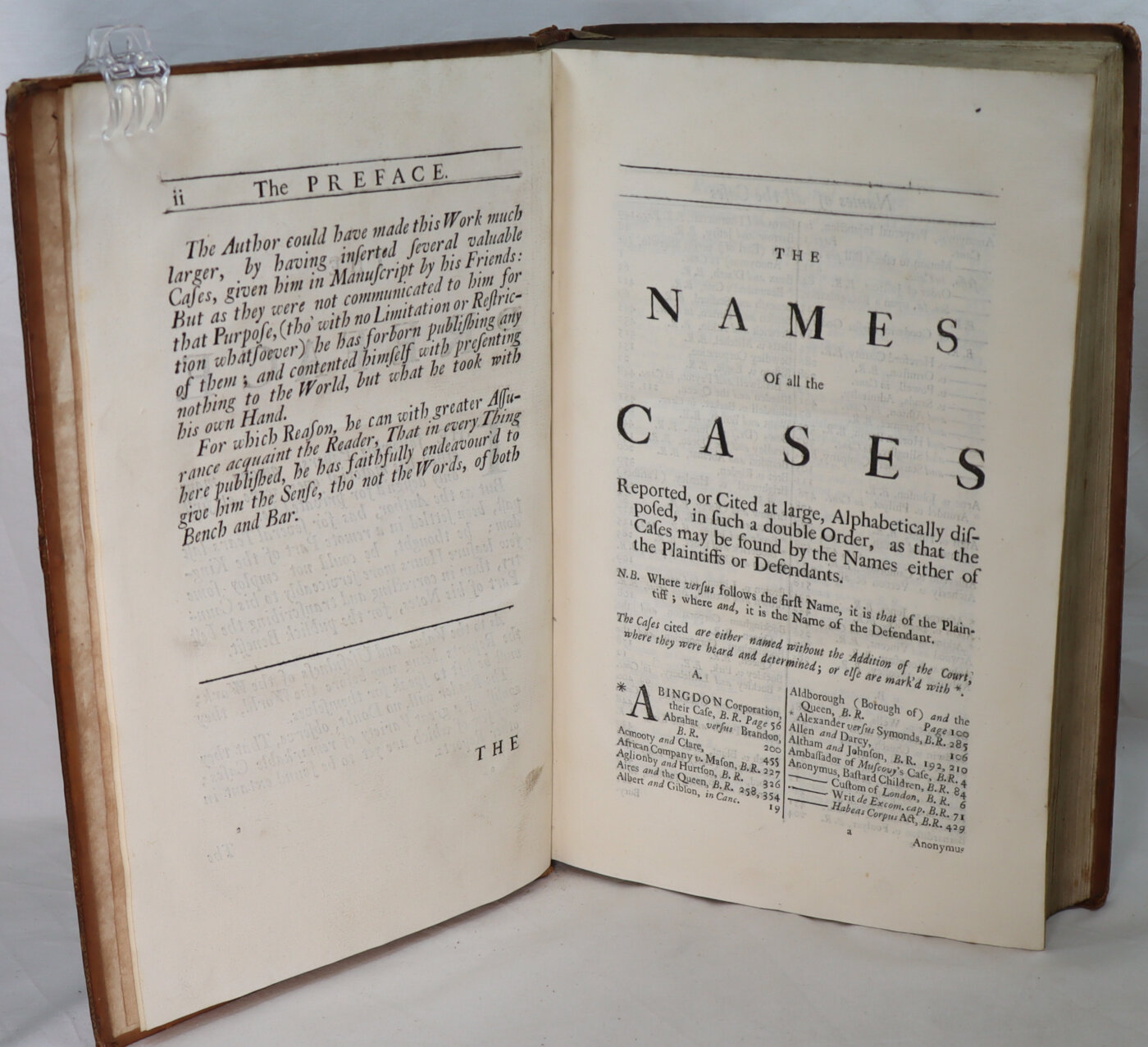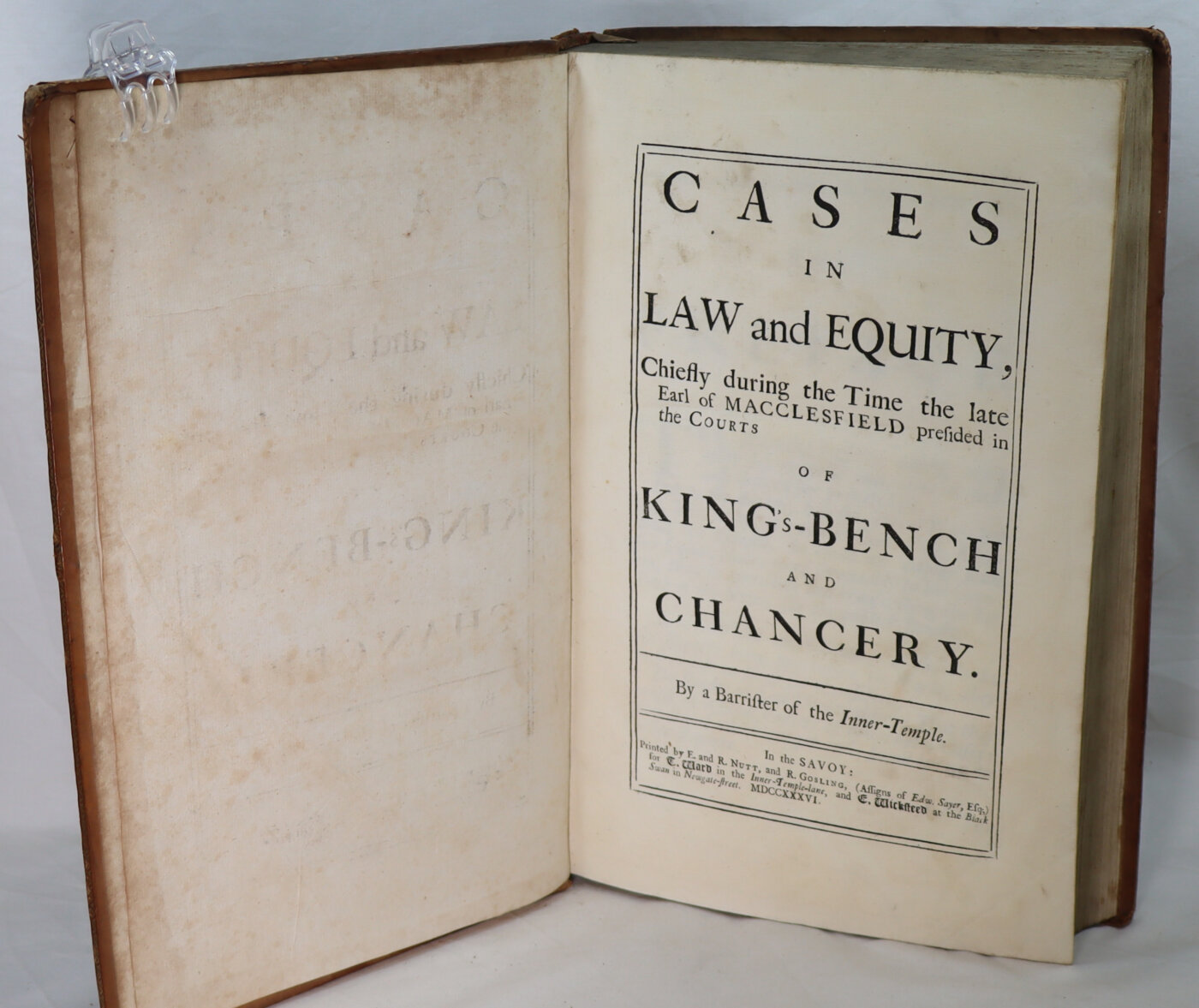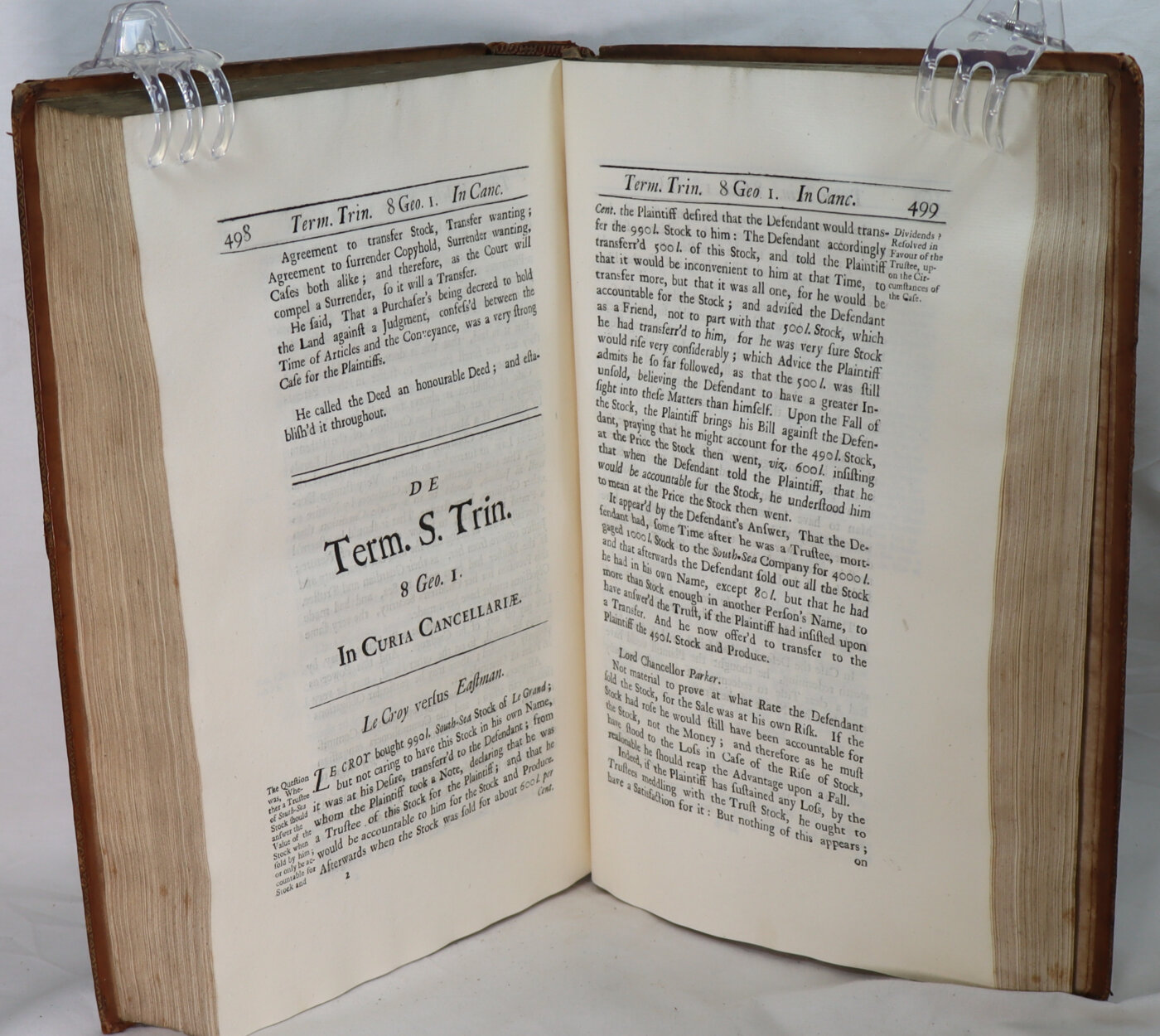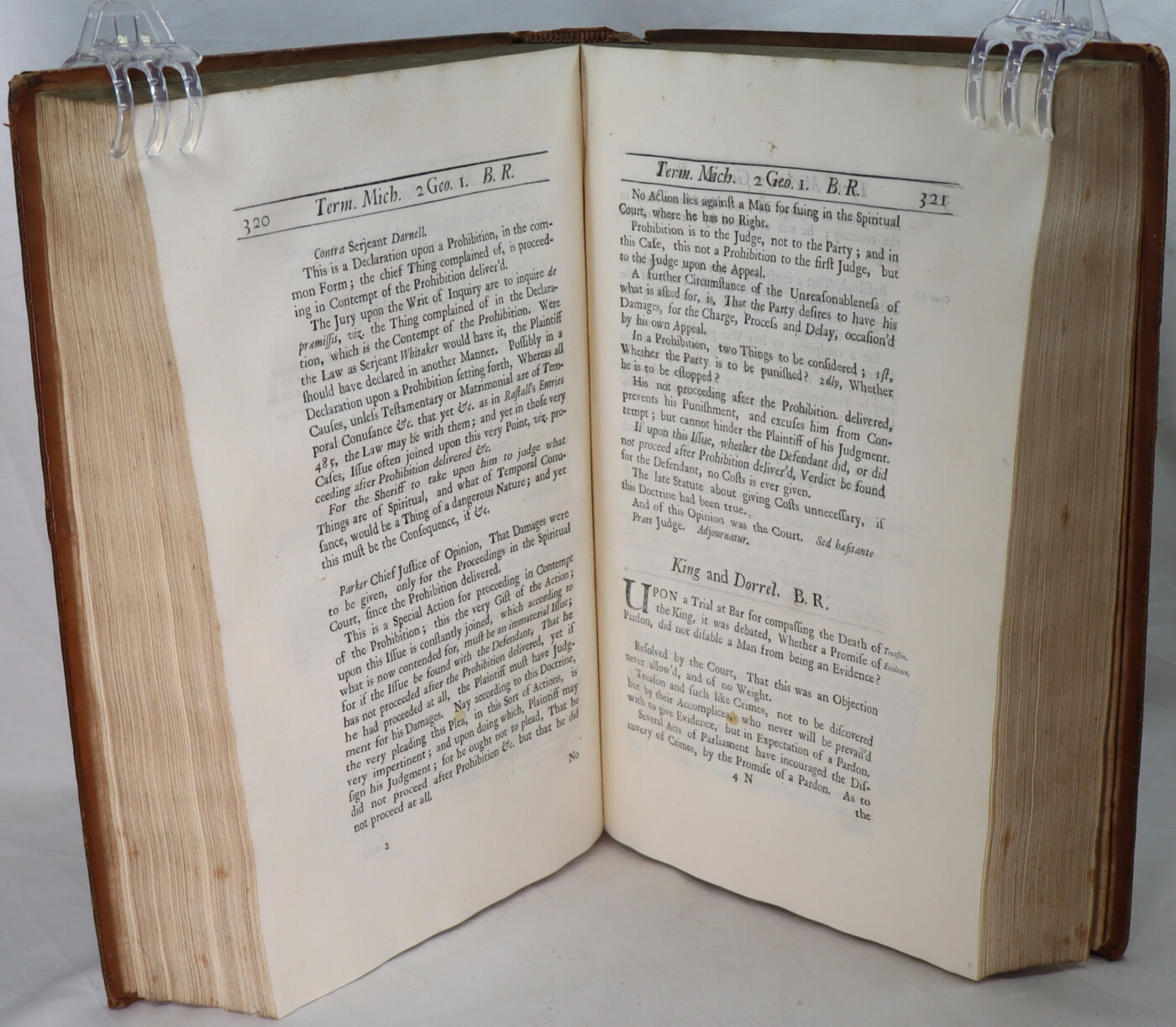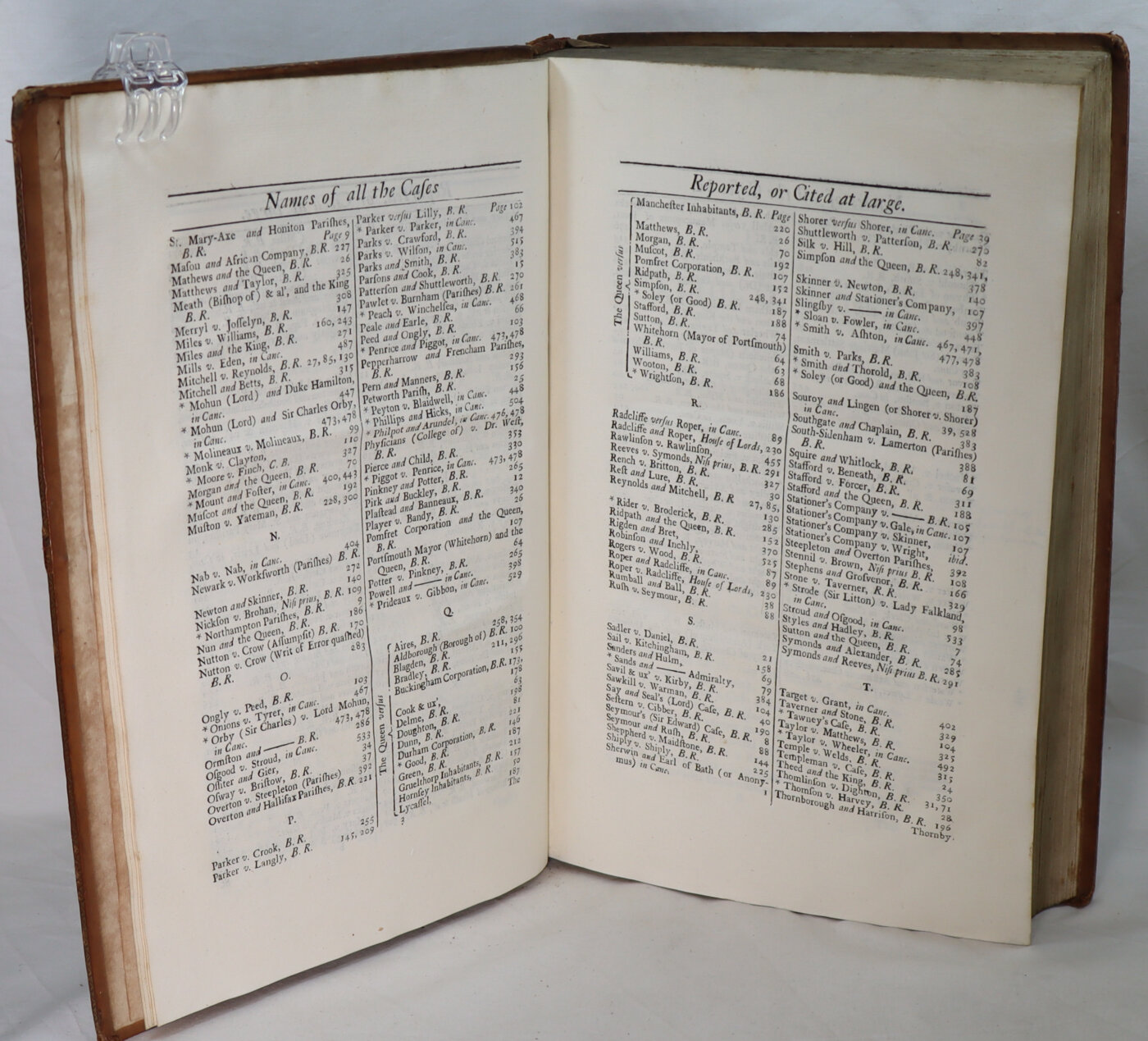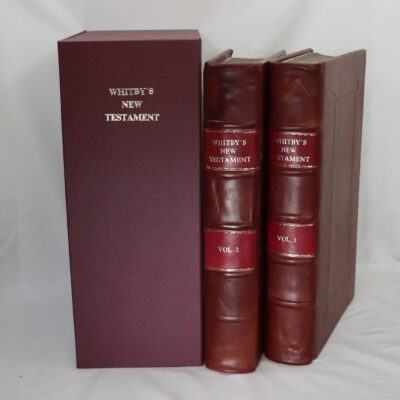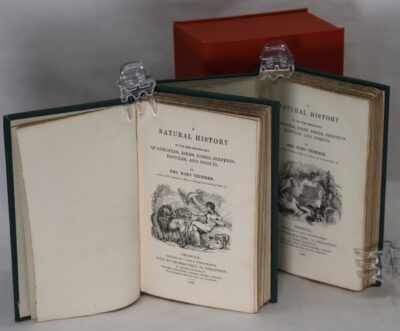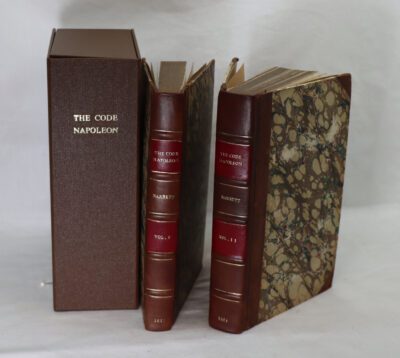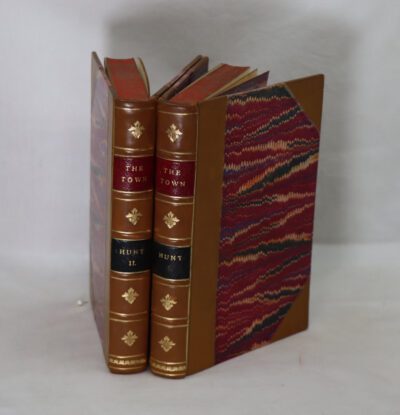Cases in Law & Equity.
Printed: 1736
Publisher: C Ward. Inner Temple Lane. London
| Dimensions | 22 × 33 × 5 cm |
|---|---|
| Language |
Language: English
Size (cminches): 22 x 33 x 5
Condition: Fine (See explanation of ratings)
Item information
Description
Leather binding with railed banding, red title plate and gilt title.
F.B.A. provides an in-depth photographic presentation of this item to stimulate your feeling and touch. More traditional book descriptions are immediately available.
Note: This book carries the £5.00 discount to those that subscribe to the F.B.A. mailing list.
The spine has a little damage but otherwise the original binding is in excellent order. The interior is in fine condition. This volume is to be found in the Inner Temple Library catalogue of 1773, the work of Librarian, the Rev. William Jeffs. From here the book passed to George Pitt, M.P. 1742-1774 who later became Lord Rivers. When the title became extinct on the death of the sixth Baron in 1880 this volume along with the Rivers library was eventually purchased by a Bradford book dealer.
In the field of jurisprudence, equity is the particular body of law, developed in the English Court of Chancery, with the general purpose of providing legal remedies for cases wherein the common law is inflexible and cannot fairly resolve the disputed legal matter. Conceptually, equity was part of the historical origins of the system of common law of England, yet is a field of law separate from common law, because equity has its own unique rules and principles, and was administered by courts of equity.
The history of equity and trusts concerns the origin of the body of rules known as Equity, Uses, English trust law and their development into the modern body of trust law that spread with the Common law to the Commonwealth and the United States.
The law of trusts was constructed as a part of “Equity”, a body of principles that arose in the Courts of Chancery, which sought to correct the strictness of the common law. The trust was an addition to the law of property, in the situation where one person held legal title to property but the courts decided it was fair just or “equitable” that this person be compelled to use it for the benefit of another. This was recognised as a split between legal and beneficial ownership: the legal owner was referred to as a “trustee” (because he was “entrusted” with property) and the beneficial owner was the “beneficiary”.
Condition notes
Want to know more about this item?
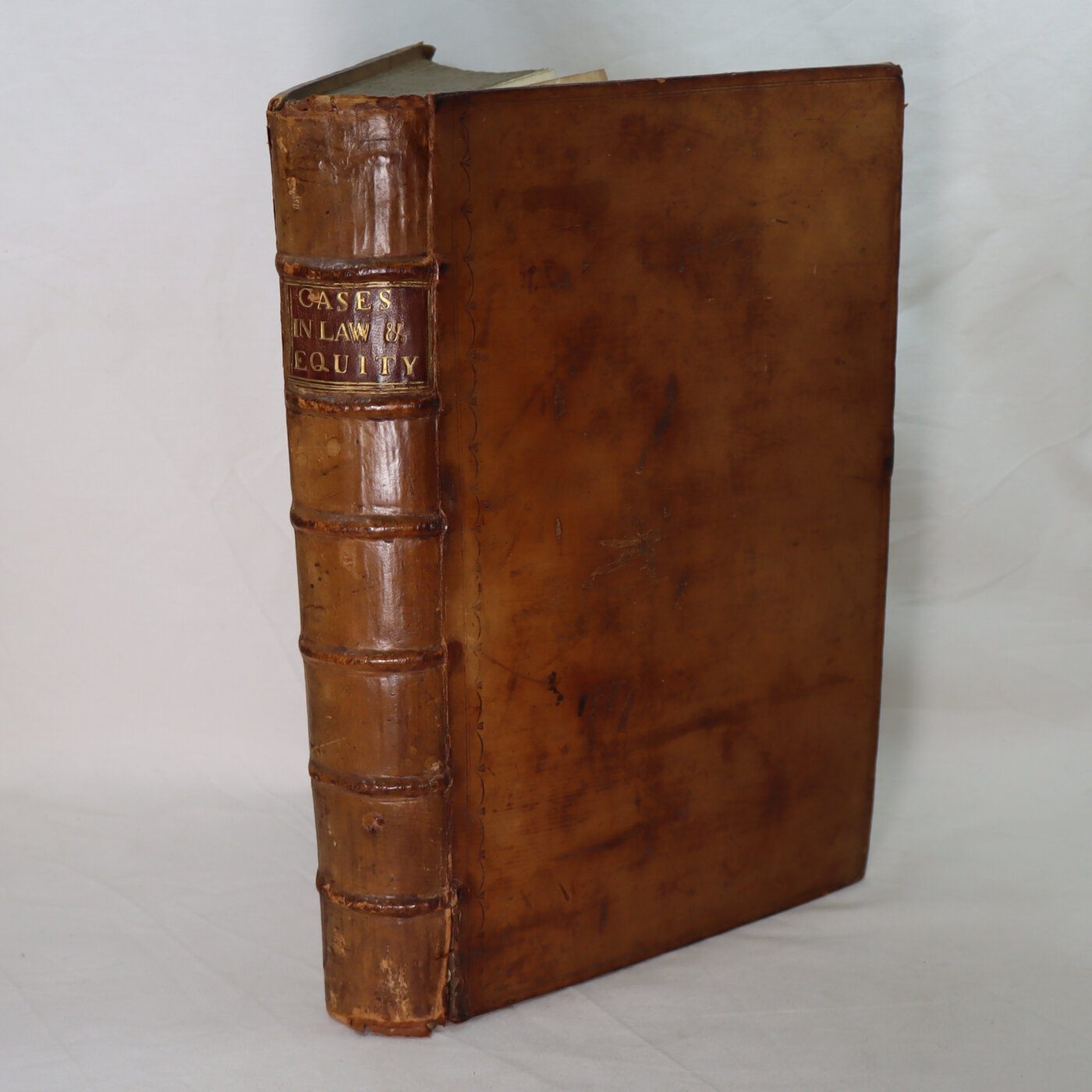
Related products
Share this Page with a friend

